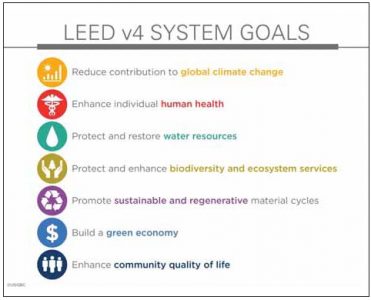Post contributed by Dr. Imran Rahman, Assistant Professor, Department of Nutrition, Dietetics, and Hospitality Management, College of Human Sciences
“Business is the economic engine of our Western culture, and if it could be transformed to truly serve nature as well as ourselves, it could become essential to our rescue.”
– Karl-Henrik Robert
Recently I read an interesting statement in an info graphic on hotel.info: If all hotels in the US go green, the impact would be the same as turning 12 million barrels of oil into 139 million trees and taking 1 million cars off the road. This single piece of information underscores the importance of the hospitality industry in the drive for a sustainable world.
Sustainability trends in the hospitality industry have come and gone in the past. In this new millennium, the industry seems to have embraced sustainability wholeheartedly. Part of it is due to rising pressure from stakeholders especially the consumers and part of it relates to a never-ending drive for more efficient operations. Sustainable practices in green hotels such as linen and terry reuse programs and signs that remind guests to use water and electricity more diligently have become all too common nowadays. Customers these days want hospitality facilities to go the extra mile in their sustainability efforts. No-cost and low-cost practices are often evaluated critically. Greenwashing has become a concern too in the lodging industry. If customers feel that practitioners are deceiving them with their sustainability efforts, they often spread negative word of mouth and boycott the facility in the future. In essence, customers want practitioners to be genuinely concerned about the green movement which is more often than not reflected in the type and number of green practices they are adopting in their facilities. The following are some trends we are witnessing in the hospitality industry:
More green buildings: The lodging industry on a global level is moving, albeit slowly, to make its facilities LEED (Leadership in Energy and Environmental Design) certified. According to U.S. Green Building Council (USGBC), LEED certified hotels can be found in as many as 40 states, 31 countries, and 5 continents. LEED certifications focus on improving indoor environmental quality, energy efficiency, materials selection, sustainable site development and water savings. LEED certifications thereby make hospitality facilities more resource efficient.
More innovative green practices: With the plethora of green practices available in hotels across the world, consumers are getting attracted to more innovative green initiatives. In addition to the ubiquitous towel and linen program, reminder signs, and recycle bins, we are observing a greater use of solar panels, rainwater harvesting systems, automated sensors, low-flow shower-heads and faucets, dual flushes, LED lights, self-closing doors, and heavily insulated ducts, pipes, and windows. Of course, the list does not end here.
Trend towards local supplies: Hotel and restaurant owners and operators are changing their preferences. By using fixtures, furniture, and supplies from local suppliers, they are not only fostering the local economy but also engaging the community. Some hotels are showcasing artwork from local artists in their hotels. This provides a creative décor for the hotel and a platform to advertise for the artists – a win-win situation for both.

Green roofs can not only add functional space to a venue, but also help lower utility bills and runoff.
Promoting healthy consumption: A worldwide trend towards healthy consumption has caused restaurants to embrace fresh local supplies in a bid to cut down food miles and to promote healthy lifestyles. Many restaurant operators are providing information about food source and nutrition. Some operators have successfully created green roofs where they are harvesting some of their own vegetables. Besides, these green roofs provide aesthetic appeal and a living habitat for birds and reduce storm water run-offs. From an efficiency standpoint green roofs lower utility bills by keeping the buildings cool during the day.
More efforts in waste reduction: Restaurants and hotels are heavily cutting down their plastic and paper use. On site recycling and composting facilities are on the rise. Additionally, restaurant operators are curtailing portion sizes to reduce food wastes. Food packaging has also been streamlined. Furthermore, many restaurants are making bulk purchases of raw materials and supplies.
Green events and meetings: Event planners are looking for more sustainable venues and are strictly following green standards. The use of water-stations in place of plastic bottles, reusable silverware, cups, and plates, and recycle bins are a common sight in events these days. This is motivating hotel and restaurant operators to provide sustainable meeting spaces and rooms equipped with LED lighting, automated climate control, eco-friendly appliances and supplies, among others.
The single most important variable in any environmental management program is – the human. This is why hotels and restaurants are investing heavily in educating their staff and customers about the importance of sustainability. A successful facility-wide green program can not only provide a sense of well-being but also bring in higher profits for the establishment through reduced costs and higher demand. However, a common barrier is often seen in the form of an added price premium for the customer in these green hotels and restaurants. In order to further the green movement, it is important that operators pass their cost savings on to the final consumers. In conclusion, it can be safely asserted that the hospitality industry is doing its bit in furthering the environmental agenda or at least seems to be on the right track. However when I think about the huge impact the industry can have in making the world a more sustainable place, I feel it is worthwhile to expect more.





